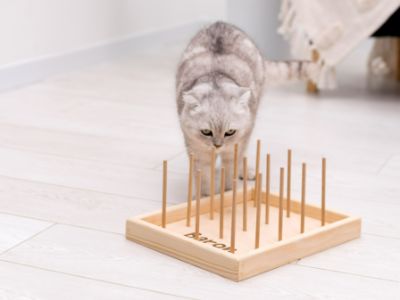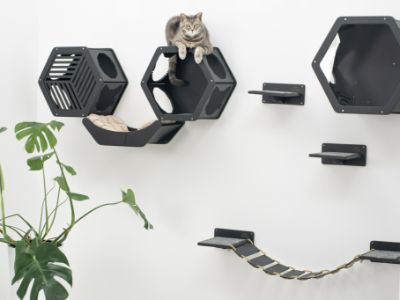Best Cat Carrier: For Scared and Difficult Cats

Photo by Marek Kupiec from Pexels
- Soft or Hard Cat Carrier? That Is the Question!
- Soft Solutions for Transporting
- Hard Transport Box Features
- How Big Should My Cat Carrier Be: The Size Guide
- Why Safe Cat Transport Matters
When it comes time to take your furry buddy to the vet, go on a journey, or move to a new place, the comfort of your feline should be provided without fail. The study “Cat Carriers – Relieving the Stress of the Journey to the Vet” says that “simply changing the style of the cat carrier can make for a huge positive improvement in the cat’s behavior.” This applies above all to the owners of cramped, stressed, and difficult felines. If your tabby is like that, today’s talk at Cats Mode will help you pick the best cat carrier for scared cat to make the trip (whatever the purpose) more enjoyable for, well, both of you.
Soft or Hard Cat Carrier? That Is the Question!

Photo by Batuhan Küçükdemir from Pexels
When on the lookout for a cat carrier for difficult cats, a range of parameters should be considered, such as styles, sizes, and sturdiness. The latter means you have to pick between a soft and hard carrier. If you feel like stuck in the difficulty of choosing the right item, here’s something to help you out.
Soft Solutions for Transporting
Crafted from soft materials like mesh and nylon, these items can be labeled the best cat carriers for nervous cats due to a range of positive features:
- Easy storage. Soft transporting containers are made of flexible materials, so it’s easier to store them.
- A lightweight. If there are hours ahead of carrying your four-legged friend, consider getting a soft cage.
- Comfort. Soft carry boxes allow kitties to settle comfortably inside. Equipped with soft, breathable, and durable materials, they guarantee a less distressing trip for a nervous tom.
However, even the sun has spots. Feline owners wondering, “What is the best cat carrier?” do not be in a hurry to invest in a soft travel pod before you check the cons:
- Low level of protection. Be careful, guys! Your mouser is at higher risk of getting seriously injured if anything falls on their temporary ‘home.’
- Damageable surface. If your paw patrol is scared and nervous, it’ll easily damage the fabric inside the container.
- Cleaning is a challenge. While things like wooden cat houses or carriers can be cleaned in no time, soft alternatives may require a washing machine session. Plus, if your meower pees inside, chances are the smell might stay for long.
Hard Transport Box Features
Usually made of plastic, hard enclosures are easily secured and cleaned. Here’s why they rock:
- They’re easy to clean. No accident will ever get you upset when you use a hard carrier! Besides, a wet cloth will help clean the mess.
- No damage is possible. If the animal is nervous on their way to the vet, the inside of the container will remain safe after the intense attack of the claws.
- Sturdiness is guaranteed. What kind of carriers are best for cats? The safest cat carrier options, of course. They don’t get damaged and withstand if anything falls on them. Thus, your buddy will be safe and sound.
- Front and top access. The hard carriers may be equipped with front and top ‘doors’ to allow you to lift the mouser as comfortably as possible. Plus, your pets can enter the container the way they like.
- No way out. As we’ve just said, the doors are part of the system, which means felines won’t escape.
Perfect doesn’t exist (except for cats, of course) - be ready for the cons of soft carriers:
- Bulkiness. Unfortunately, these baskets are not easy and comfy to carry with you, unlike the soft ones.
- Less comfort. Since the padding is absent, owners have to infuse some comfort themselves. Use blankets, pillows, etc.
Hard to store. You will need to find a place to store the bulky carrier. Needless to say, traveling with it might give you a headache.
How Big Should My Cat Carrier Be

Photo by Svetlana Bützberger from Pexels
At Cats Blog, we stand for 100% feline comfort. That is why we insist that size does matter! The chosen travel case for your cat should be spacious enough to let your pet lie down, stand, sit, and turn around if needed. What is the best pet carrier for cats in terms of size? The one that is 1.5 times the pet’s length from the nose to the tail (the base).
No matter how tempted you are to purchase an extra-large transporting bag for your kitty – don’t! Not only will the animal feel insecure inside, but it may also slide and fall during the travel. Make sure the container allows a tabby adequate space to reposition and move.
The owners of two or more felines shouldn’t place them into the same carrier unless they’re small kittens.
Why Safe Cat Transport Matters

Photo by Roshan Fotowala from Pexels
Now that you know the answer to the question “What are the best cat carrier bags?”, make sure your fluffy companion is comfortable with his personal means of transportation. The feline will be less stressed about the voyage if you give them time to get comfortable with the carrier. Leave it open and let the indoor tiger smell, explore, and make it their territory.
Do you see the cat getting nervous about the tote? Place comfy bedding next to it so that the four-legged owner may get used to it. Or, perhaps you noticed them ‘nesting’ in it for a while? Try to close the door and open it to see how they feel when being in an enclosed space. All these pre-transportation steps are essential to guarantee a smooth journey from point A to point B. On the other hand, improper shipping can make your much-loved pet suffer from the following issues:
- Getting injured. If you fail to put them in a durable container, they’re going to tour around in your car, scratch you and other passengers, and injure themselves in the process.
- Feeling anxious. If your furry pal is sensitive to new environments, smells, and sounds, transporting them without a proper enclosure might lead to serious behavioral changes and higher levels of anxiety.
- Facing the dangers of the outdoors in case of escape. If there’s no carrier at hand, chances of escape get higher. As a result, your indoor feline may end up in the middle of hostile and unfamiliar environments.
- Getting sick. A stressful ride to the vet or elsewhere may cause a range of medical issues, from digestive conditions to immune system drop.
Whatever voyage you’re about to set off on with your purring machine, talk to your vet if you doubt about the transportation options. If the little meower fears the carrier and feels nervous, ask the vet to give recommendations on potential alternatives. Chances are the expert will recommend comforting medications to spray the carrier with some minutes before leaving the house. This kind of pheromone helps tabbies calm down and have a pleasant trip. Finally, always drive carefully!

















